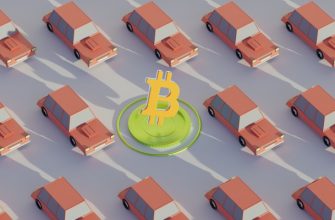- Defining Real World Assets: A Comprehensive Overview
- The Role of Tangibility: Understanding Physical vs. Digital Assets
- Key Characteristics of Real World Assets: What Sets Them Apart?
- Evaluating the Impact of Real World Assets on Investment Strategies
- Legal and Regulatory Considerations in Real World Asset Management
- Future Trends: The Evolution of Real World Assets in a Digital Economy
Defining Real World Assets: A Comprehensive Overview
Real world assets (RWAs) refer to tangible and intangible assets that exist in the physical world, providing inherent value and utility. These assets encompass a wide range of categories, each contributing to diverse investment opportunities and economic stability. Understanding the nature of real world assets is crucial for investors, businesses, and policymakers alike.
- Real Estate: This includes residential, commercial, and industrial properties. Real estate serves as a foundation for wealth generation and offers potential for appreciation over time.
- Commodities: Physical goods such as gold, silver, oil, and agricultural products fall under this category. Commodities are essential for various industries and often act as a hedge against inflation.
- Art and Collectibles: Unique items such as paintings, antiques, and rare collectibles can appreciate significantly in value. They offer both aesthetic pleasure and investment potential.
- Infrastructure: Physical structures like bridges, roads, and utilities represent critical real world assets. They provide necessary services and contribute to economic growth.
- Financial Instruments: While not tangible in the traditional sense, financial instruments tied to real assets, such as mortgages and bonds, are also considered real world assets due to their backing by physical properties.
The implications of real world assets extend beyond mere investment opportunities. They play a vital role in economic development, asset diversification, and risk management. By integrating real world assets into investment portfolios, stakeholders can enhance their resilience against market fluctuations and economic uncertainties.
In summary, real world assets embody a diverse range of categories with significant importance for investors and the broader economy. Their ability to provide value and stability makes them a pivotal component of any investment strategy.
The Role of Tangibility: Understanding Physical vs. Digital Assets
The distinction between physical and digital assets is crucial in understanding real world assets. Physical assets are tangible items that occupy a physical space, like real estate, machinery, or vehicles. In contrast, digital assets are intangible, existing only in digital form, such as cryptocurrencies, digital art, and software. Each type of asset has unique characteristics and implications for ownership and value.
Physical assets are often considered more stable due to their inherent value and usability. For instance, real estate can generate income through leasing or appreciation over time. On the other hand, digital assets are known for their potential for rapid growth and high liquidity. The volatility of cryptocurrencies exemplifies this, with their values fluctuating significantly within short periods.
- Physical Assets: These include property, equipment, and inventory. They provide tangible benefits and can often be used as collateral for loans.
- Digital Assets: Examples include NFTs, online accounts, and digital currencies. They offer advantages in speed of transactions and ease of transfer.
- Valuation: Physical assets are typically appraised based on market conditions, while digital assets may rely on market demand and technological trends for their value.
- Ownership: Physical assets require maintenance and insurance, while digital assets often involve cybersecurity measures to protect ownership and value.
Understanding these differences is vital for investors and individuals looking to diversify their portfolios. The integration of digital assets into traditional investment strategies highlights the evolving landscape of real world assets. As the digital economy continues to grow, the balance between physical and digital assets will play a significant role in shaping financial futures.
Key Characteristics of Real World Assets: What Sets Them Apart?
Real world assets (RWAs) encompass tangible items and resources that possess intrinsic value, distinguishing them from digital or virtual assets. These assets are critical in the financial ecosystem as they provide stability and reliability. Key characteristics of real world assets include:
- Tangibility: RWAs are physical items, such as real estate, commodities, and machinery, that can be seen and touched, making them fundamentally different from intangible assets like cryptocurrencies.
- Intrinsic Value: The value of real world assets is derived from their inherent qualities and utility. For instance, land has value due to its potential for agriculture, development, or resource extraction.
- Ownership Rights: Real world assets come with legal ownership rights, offering security and protection against loss or theft, unlike many digital assets which may lack clear ownership structures.
- Market Demand: The value of RWAs is influenced by supply and demand dynamics within various markets, ensuring that they can be bought and sold based on current economic conditions.
- Liquidity: While some real world assets may have lower liquidity compared to digital assets, they often provide avenues for liquidation through traditional markets, ensuring that owners can access capital when needed.
Understanding these characteristics is essential for investors and stakeholders, as they navigate the landscape of real world assets. By recognizing the tangible benefits and security associated with RWAs, individuals and institutions can make informed decisions that enhance their portfolios and mitigate risks. The implications of these characteristics extend beyond mere ownership, influencing investment strategies and market trends.
Evaluating the Impact of Real World Assets on Investment Strategies
Evaluating the impact of real world assets (RWAs) on investment strategies is essential for investors aiming to enhance their portfolios. RWAs encompass tangible and intangible assets that have intrinsic value, such as real estate, commodities, and intellectual property. Understanding how these assets influence investment approaches can significantly improve risk management and return potential.
Real world assets contribute to diversification within investment portfolios. By integrating RWAs, investors can mitigate volatility and reduce overall risk. For instance, incorporating real estate into an investment strategy often leads to more stable returns due to its relatively low correlation with traditional financial markets.
- Risk Mitigation: Real world assets act as a buffer against market fluctuations, providing a stable investment option.
- Inflation Hedge: Many RWAs, such as real estate and commodities, tend to appreciate during inflationary periods, preserving purchasing power.
- Income Generation: Assets like rental properties and agricultural land can generate consistent income streams, enhancing overall investment performance.
The integration of real world assets into investment strategies requires thorough analysis. Investors must consider factors such as market trends, asset liquidity, and geopolitical influences. Additionally, the valuation of RWAs can be complex, necessitating a deep understanding of the underlying factors that contribute to their worth.
Furthermore, the evolution of technology has facilitated the accessibility and trading of real world assets. Innovations like blockchain technology enable fractional ownership and increased liquidity, making it easier for investors to incorporate RWAs into their portfolios. This technological advancement not only democratizes access to real world assets but also enhances the potential for higher returns.
Ultimately, evaluating the impact of real world assets on investment strategies is crucial for informed decision-making. By recognizing the unique characteristics and advantages of RWAs, investors can develop more robust and resilient portfolios that withstand market volatility and economic uncertainty.
Legal and Regulatory Considerations in Real World Asset Management
When delving into the realm of real world assets, it is essential to comprehend the legal and regulatory considerations that govern their management. Real world assets encompass a wide array of tangible items, such as real estate, commodities, and vehicles, all of which are subject to specific laws and regulations. These legal frameworks ensure that asset management practices comply with local, national, and international standards.
One of the primary legal considerations in managing real world assets is the ownership rights associated with these properties. It is vital to establish clear titles and ownership documentation to avoid disputes. Furthermore, regulatory bodies often impose restrictions on the transfer and sale of certain assets, particularly when dealing with sensitive commodities or properties in regulated industries.
- Compliance with Local Laws: Each region has its own set of regulations governing asset management, including zoning laws for real estate and environmental regulations for natural resources.
- Tax Implications: Real world assets may attract various taxes, including property taxes, capital gains taxes, and sales taxes, depending on the jurisdiction.
- Reporting Requirements: Asset managers must adhere to financial reporting standards, which can vary significantly by region and asset type, ensuring transparency and accountability.
- Licensing and Permits: Certain asset classes may require special licenses or permits, particularly in industries such as finance, healthcare, and energy.
- International Regulations: For those managing assets across borders, compliance with international treaties and agreements is crucial to avoid legal repercussions.
Understanding these legal and regulatory frameworks is paramount for anyone involved in real world asset management. Non-compliance can result in severe penalties, including fines and restrictions on asset use. Therefore, staying informed about changes in legislation and best practices is essential for effective management and protection of real world assets.
Future Trends: The Evolution of Real World Assets in a Digital Economy
The emergence of digital economies has led to significant transformations in the perception and management of real world assets. As technology continues to evolve, the integration of physical assets into digital platforms is becoming increasingly prevalent. This shift not only enhances accessibility but also improves liquidity and transparency in asset transactions.
- Tokenization: One of the most revolutionary trends is the tokenization of real world assets. This process involves converting physical assets into digital tokens on a blockchain, allowing for fractional ownership and easier transferability.
- Smart Contracts: The implementation of smart contracts facilitates automated transactions, minimizing the need for intermediaries. This innovation reduces costs and increases efficiency in the management of real world assets.
- Increased Transparency: Blockchain technology offers unparalleled transparency, as all transactions related to real world assets can be traced and verified. This feature builds trust among stakeholders and reduces the chances of fraud.
- Market Expansion: Digital economies enable investors to access a broader range of real world assets, including those previously limited to local markets. This expansion opens up new opportunities for diversification and investment.
- Enhanced Liquidity: The digitization of real world assets enhances liquidity by creating new trading platforms where assets can be bought and sold more efficiently. This capability allows investors to enter and exit positions with greater ease.
As the digital economy continues to evolve, the implications for real world assets are profound. Organizations and individuals must adapt to these changes, leveraging technology to optimize their asset management strategies. The future of real world assets is undeniably intertwined with digital innovation, paving the way for new investment paradigms and economic models.









